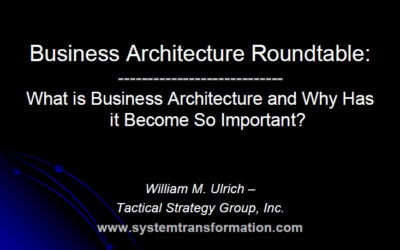Is there a BPM Hall of Fame? I don’t think so, but there should be, to recognize the true pioneers and innovators in the field. BPM’s core ideas and technologies come from several divergent fields, and my list would include those who first introduced them – ideas about what a business process is, and what managing one really means. Thinking about who should be in a BPM Hall of Fame is a fun exercise, and you might it helpful in framing your own views.
Articles by: BPMInstitute.org
BPM Supports a New Way of Working – The Dynamics of Swarming
What makes a flock of birds or a school of fish move as if they are a single entity? What makes them all suddenly rise, turn and accelerate at the same time? There is something else at work here than just a leader bird or a captain fish telling all the others what to do. This quick coordinated behavior from large groups of individuals is called swarming.
Deciding on the Right Level of Business Process Documentation
One of the most ambiguous terms in business today is “process documentation”. It has become the key phrase looked for whether it’s a prospective employee looking for that process-centric organization, an employer trying to lure talented workers or a CEO providing proof of compliance to corporate auditors or assuring the Board of Directors that the organization has achieved a process maturity level consistent with its key goals and objectives.
What is Business Architecture and Why Has it Become So Important?
Business architecture is the critical bridge between business strategic and operational planning and technology at an enterprise level. This Round Table will explain why it is becoming more important in 2008.
Business Architecture survey results will also be discussed.
Featured Speakers
William Ulrich, President, TSG, Inc. and Co-Chair BPMInstitute.org’s Business Architecture Conference Series
William Ulrich is President of TSG, Inc. and a strategic planning consultant.
BPMS Watch: Organizing Complex BPMN Models
When you first begin to model processes with BPMN, it’s hard to look past the challenge of the notation itself – all the event types, flow control patterns, exception handling patterns, and the rules for sequence flows and message flows. With a bit of training and practice, the rules and diagram patterns soon become second nature, and that part of the modeling effort gets easy.
Tipping Points Round Table Series – BDM with BPM and SOA: Exploring The Relationships
Business Decisions are the missing link joining BPM and SOA to Business Rules. The Round Table explores strategies for maximizing ROI for operational business decisions and BPM/BDM projects. It discusses the benefits attained and agility gained when organizations externalize and manage Decisions and Business Rules.
This round table is now available on-demand.
SOA Watch: Most SOA Consultants Need a Lesson in SOA
Many people in the planning stages for SOA do not get the proper advice and guidance as to how to proceed, or even what a SOA actually is.
Practical SOA management (end-to-end performance and problem resolution)
With IT Operations worried that SOA performance management is teetering on the brink of chaos, can they find anything to love about SOA?
There is a lot to love about the flexible solution design approach that Service-Oriented Architecture (SOA) represents. SOA facilitates discoverable and reusable software services, which developers love because they need not recreate existing code. Indeed, all sorts of software services, from browser widgets to serious business assets (IBM’s SOA catalog for example) are now easily downloadable.
The Human Performance System
The human performance system (HPS) is a model that describes the variables influencing the behavior of a person in a work system. The HPS has been used by performance analysts and others for some 40 years to diagnose and even predict the likely behavior of human beings in given performance situations. The earliest version of this model was created in the 1960’s by Geary Rummler and Dale Brethower .
Insight and Ideas
Almost everyone is familiar with the famous Edison quote: “Genius is 1 percent inspiration and 99 percent perspiration”. To know much about Edison’s life, is to know that was certainly true for him – and many other creative individuals when you take the time to learn how they worked. Yet, there is still a strong sense among many that great ideas come to the gifted in the way lightning strikes, unpredicted and unexpected.
Insights as Idea Sources
In my experience, great ideas more likely come from great insight.




















